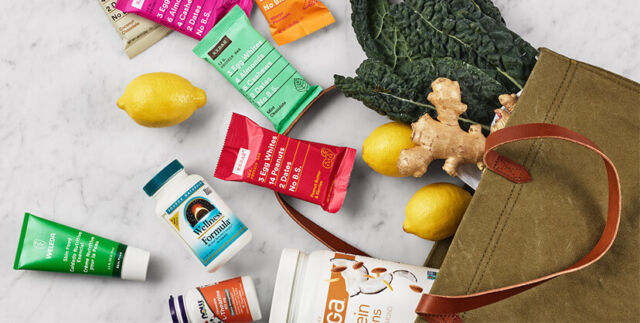In this simple guide to reading and understanding product labels. I’ll take you through the pointers to look out for while shopping. It can be quite tricky especially if you don’t know how to read product labels or simply get misled due to lack of understanding.
Consumers are more health-conscious than ever, so some food manufacturers use misleading tricks to convince people to buy highly processed and unhealthy products.
Food labeling regulations are complex, making it harder for consumers to understand them.
This article explains how to read food product labels so that you can differentiate between mislabeled junk and truly healthy foods.
Odds are you’ve scanned food labels while shopping — but do you know how they can help you make healthier choices?
“By understanding the information on food labels — like calories, added sugars, and vitamins — you can make better health decisions for you and your family.
- Study Ingredients List
Product ingredients are listed by quantity — from highest to lowest amount.
This means that the first ingredient is what the manufacturer used the most.
A good rule of thumb is to scan the first three ingredients, as they make up the largest part of what you’re eating.
If the first ingredients include refined grains, a type of sugar, or hydrogenated oils, you can assume that the product is unhealthy.
Instead, try choosing items that have whole foods listed as the first three ingredients.
SUMMARY
Ingredients are listed by quantity — from highest to lowest. Try looking for products that list whole foods as the first three ingredients and be skeptical of foods with long lists of ingredients.
- Look out for Serving Sizes
Nutrition labels state how many calories and nutrients are in a standard amount of the product — often a suggested single serving.
However, these serving sizes are frequently much smaller than what people consume in one sitting.
For example, one serving may be half a can of soda, a quarter of a biscuit, half a chocolate bar, or a single cookie.
In doing so, manufacturers try to deceive consumers into thinking that the food has fewer calories and less sugar.
Many people are unaware of this serving size scheme, assuming that the entire container is a single serving, when in truth it may consist of two, three, or more servings.
If you’re interested in knowing the nutritional value of what you’re eating, you need to multiply the serving given on the back by the number of servings you consumed. E.g If a serving is 100 grams and the calories are 20g of sugar per serving, if you consumed 1000 grams of the product this means you took 10 servings. Multiply the calories of 20 grams of sugar by 10 (the number of servings in 1000g is 10 servings) to get how many calories of sugar are consumed, which will be 200 grams of sugar.
SUMMARY
Serving sizes listed on the packaging may be misleading and unrealistic. Manufacturers often list a much smaller amount than what most people consume in one sitting.
Most Misleading Claims.
Health claims on packaged food are designed to catch your attention and convince you that the product is healthy.
Here are some of the most common claims — and what they mean:
Multigrain – This sounds very healthy but only means that a product contains more than one type of grain. These are most likely refined grains — unless the product is marked as whole grain.
Natural – This does not necessarily mean that the product resembles anything natural. It simply indicates that at one point the manufacturer worked with a natural source like apples or rice.
Organic – This label says very little about whether a product is healthy. For example, organic sugar is still sugar. Some may mean it was grown without pesticides.
No added sugar – Some products are naturally high in sugar. The fact that they don’t have added sugar doesn’t mean they’re healthy. Unhealthy sugar substitutes may also have been added.
Gluten-free – Gluten-free doesn’t mean healthy. The product simply doesn’t contain wheat, spelt, rye, or barley. Many gluten-free foods are highly processed and loaded with unhealthy fats and sugar.
Low-calorie – Low-calorie products have to have one-third fewer calories than the brand’s original product. Yet, one brand’s low-calorie version may have similar calories as another brand’s original.
Low-fat – This label usually means that the fat has been reduced at the cost of adding more sugar. Be very careful and read the ingredients list.
Low-carb – Recently, low-carb diets have been linked to improved health. Still, processed foods that are labeled low-carb are usually still processed junk foods, similar to processed low-fat foods.
Made with whole grains – The product may contain very little whole grains. Check the ingredients list — if whole grains aren’t in the first three ingredients, the amount is negligible.
Fortified or enriched –This means that some nutrients have been added to the product. For example, vitamin D is often added to milk. Yet, just because something is fortified doesn’t make it healthy.
Fruit-flavored – Many processed foods have a name that refers to a natural flavor, such as strawberry yogurt. However, the product may not contain any fruit — only chemicals designed to taste like fruit.
Zero trans-fat – This phrase means “less than 0.5 grams of trans fat per serving.” Thus, if serving sizes are misleadingly small, the product may still contain trans-fat.
Light/Lite – Light products are processed to reduce either calories or fat. Some products are simply watered down. Check carefully to see if anything has been added instead — like sugar.
Despite these cautionary words, many truly healthy foods are organic, whole grain, or natural. Still, just because a label makes certain claims, doesn’t guarantee that it’s healthy.
SUMMARY
Many marketing terms are associated with improved health. These are often used to mislead consumers into thinking that unhealthy, processed food is good for them.
Understanding Different Names for Sugar.
Sugar goes by countless names — many of which you may not recognize.
Food manufacturers use this to their advantage by purposely adding many different types of sugar to their products to hide the actual amount.
In doing so, they can list a healthier ingredient at the top, mentioning sugar further down. So even though a product may be loaded with sugar, it doesn’t necessarily appear as one of the first three ingredients.
To avoid accidentally consuming a lot of sugar, watch out for the following names of sugar in ingredient lists:
Types of sugar: beet sugar, brown sugar, buttered sugar, cane sugar, caster sugar, coconut sugar, date sugar, golden sugar, inverted sugar, muscovado sugar, organic raw sugar, raspadura sugar, evaporated cane juice, confectioner’s sugar.
Types of syrup: carob syrup, golden syrup, high-fructose corn syrup, honey, agave nectar, malt syrup, maple syrup, oat syrup, rice bran syrup, and rice syrup.
Other added sugars: barley malt, molasses, cane juice crystals, lactose, corn sweetener, crystalline fructose, dextran, malt powder, ethyl maltol, fructose, fruit juice concentrate, galactose, glucose, disaccharides, maltodextrin, and maltose.
Natural sugars: Stevia, Dates, Maple syrup, Agave, and Honey in their purest forms are the healthiest because they are natural.
Many more names for sugar exist, but these are the most common.
If you see any of these in the top spots on the ingredients lists of other added sugars — or several kinds throughout the list — then the product is high in added sugar.
SUMMARY
Sugar goes by various names — many of which you may not recognize. These include cane sugar, invert sugar, corn sweetener, dextran, molasses, malt syrup, maltose, and evaporated cane juice.
Alternatively, opt for more natural sugars/sweeteners whenever you can.
Nutritionally recommended for no more than 25 grams of added sugars per day for women and no more than 36 grams per day for men.
Next time you go shopping be aware of these facts, so you don’t end up a victim of confusion regarding product labels. I hope this guide has equipped you with clarity in understanding the contents of the products you are buying.
“Investing in your health is a gift that keeps giving.”


